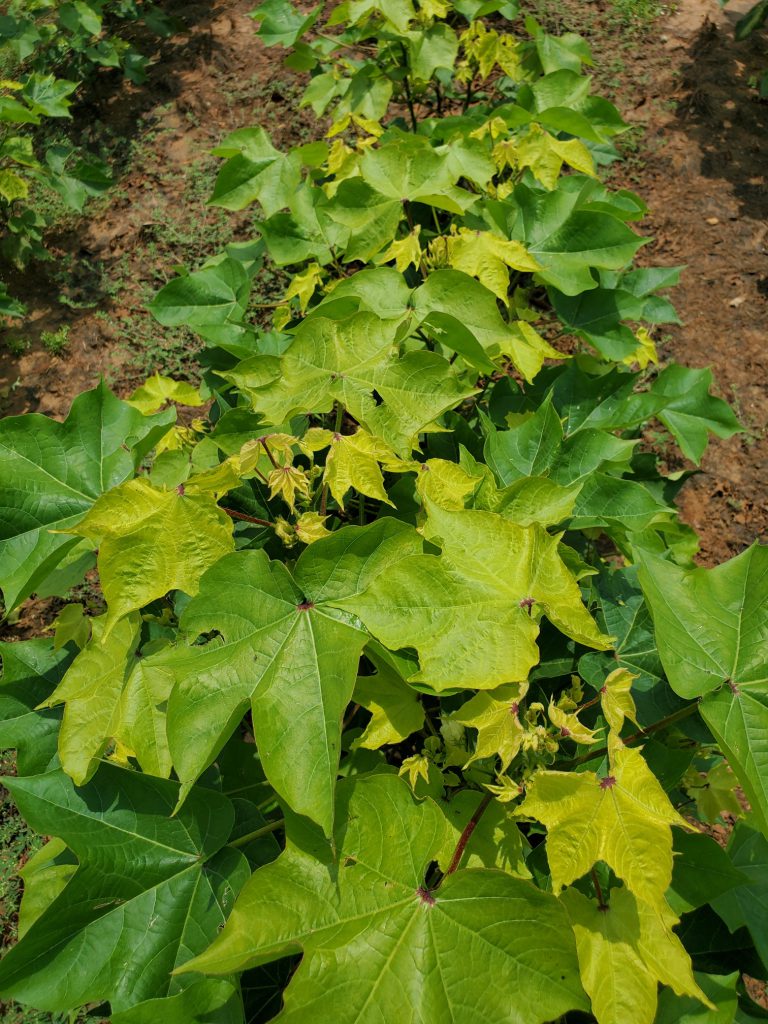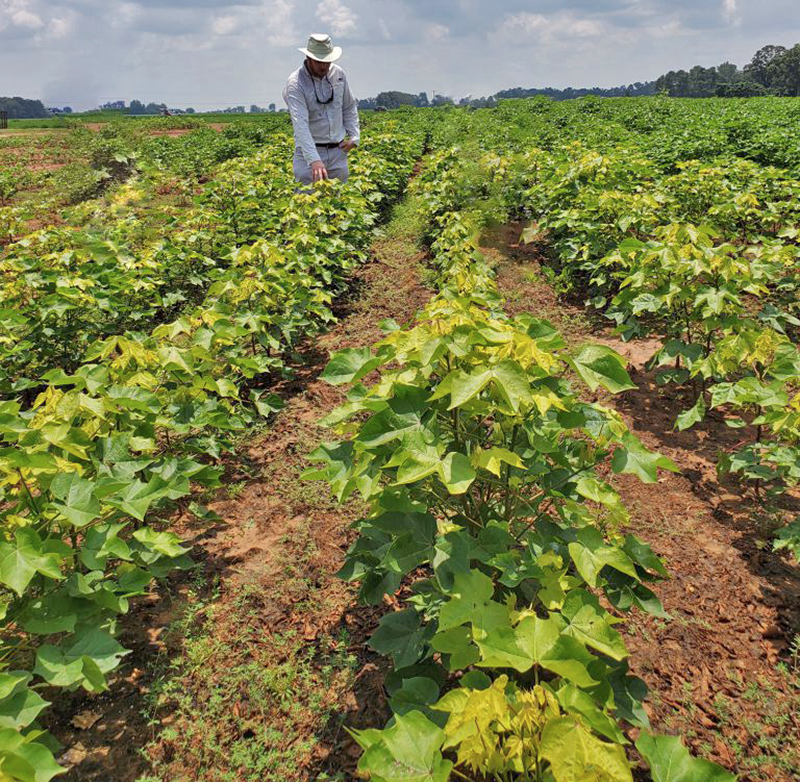
Cotton yellowing caused by a sulfur nutrient deficiency in saturated soils from excess rainfall. Credit: LIbbie Johnson, UF/IFAS
Summer 2021 is proving to be anything but normal in crop fields across the Panhandle. Abundant rainfall has led to delayed fertilizer applications in cotton fields, delayed PGR treatments, and delayed pesticide applications. With every grower’s schedule delayed, it should be expected to see problems, but a nutrient deficiency always sets growers, consultants, and extension agents’ heads to spinning. One particular field has a low area, near where the farmer does washouts from equipment, but also near where he piles up gypsum and occasionally lime.
For the past 6 weeks, the grower had noticed a decline in plant vigor. He did soil nutrient tests, had a consultant pull leaf samples looking for pesticide contamination, and nothing came back unusual. It was a low, wet area, and it was assumed that was the only issue. In the last few weeks, the affected spots started to grow in diameter and the plants took on a jaundiced look – all the newer leaves started to turn yellow. Dr. Ian Small, NFREC Plant Pathologist, and I visited the field and talked with one of the growers. Dr. Small showed pictures and discussed the yellowing with Dr. David Wright, who confirmed that the yellowing looked a lot like sulfur deficiency. The Sulphur Institute reports that persistent yellowing of new leaves and reddening of the petiole is visible in cotton suffering from sulfur deficiency. After too much rainfall, one would expect to see nitrogen deficiency. The issue with nitrogen is that usually the new leaves get the nitrogen where old leaves turn yellow. With sulfur, the deficiency shows up in the new leaves first, and the reddening stems are usually prevalent. Sulfur is an essential component in the synthesis of plant proteins, enzymes, and chlorophyll. Without enough sulfur, cotton plants will be spindly and cotton bolls will not develop to their full potential.

Dr. Ian Small, UF/IFAS Crop Pathologist examined the yellowing cotton. He determined that the saturated soils in low areas from excess rainfall caused sulfur deficiency in this cotton field. Credit: Libbie Johnson, UF/IFAS
–
Traditionally farmers add sulfur to the soil through fertilizer applications. Some fertilizer products that contain sulfur include:
- elemental sulfur – 30-90% S
- ammonium sulfate – 24% S
- sulfate of potash-magnesium – 22% S
- potassium sulfate – 18% S
- ammonium thiosulfate, 24% S
- gypsum, 18% S
–
Local ag supply dealers may have other products that can also be used to add sulfur to the soil. This field had sulfur added, but the problem was that the ground was too wet to allow for uptake. Cotton in this particular stretch of ground has been fighting a lot of battles, but too much water saturating the growing zone is probably to blame for most of it. Sulfur deficiency is yet another challenge of a very wet summer.
–
